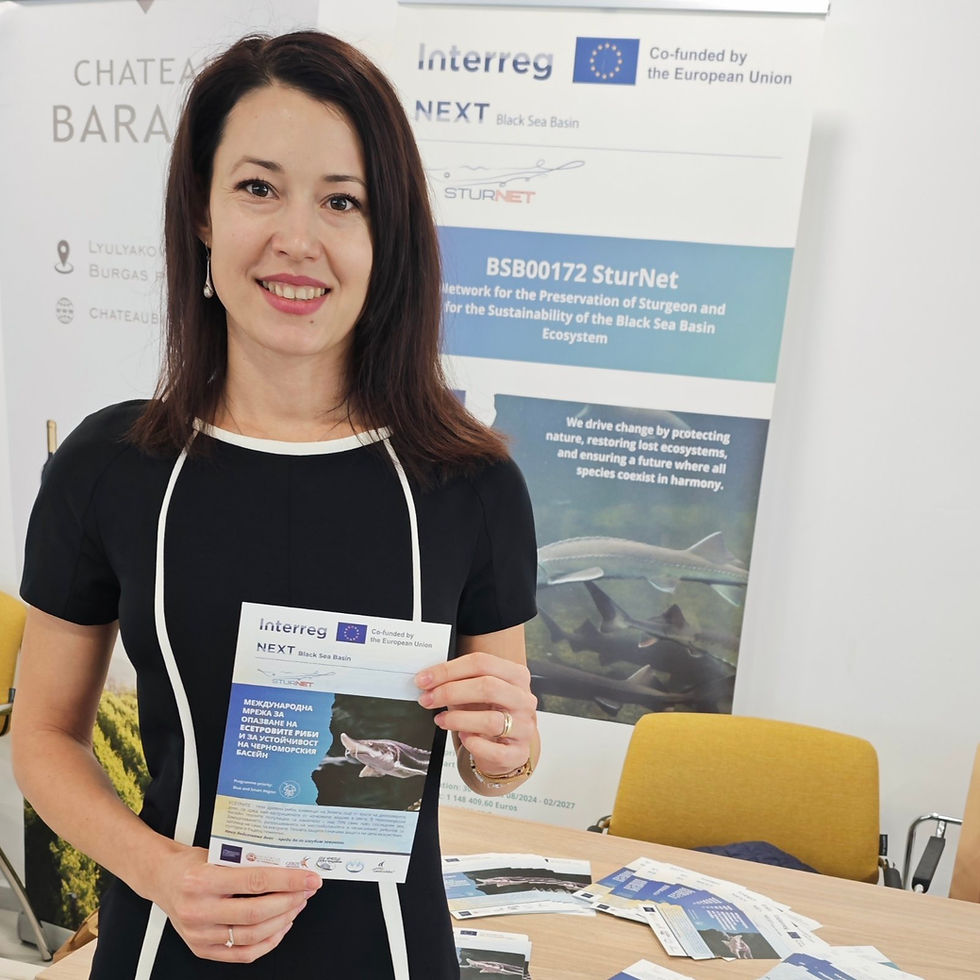Historic Discovery: Acipenser nudiventris Returns to the Azov Sea!
- sulevaivelina
- Oct 28
- 2 min read
А remarkable milestone for sturgeon conservation in the Azov Sea basin!
On October 17, 2025, scientists from the Azov-Black Sea branch of VNIRO (AzNIIRKH) recorded the first confirmed sighting in decades of the ship sturgeon (Acipenser nudiventris) near Kuchugury. The juvenile specimen measured 56 cm in length and weighed 1.2 kg—a promising sign of the species’ resilience.
About the Ship Sturgeon
The ship sturgeon is classified as Critically Endangered on the IUCN Red List of Threatened Animals. Historically, it has inhabited the basins of the Caspian, Aral, and Black Seas and their major rivers. Adult sturgeons can reach up to 2 meters in length and weigh as much as 130 kg. They are anadromous: spending most of their life in coastal sea waters but migrating upstream in rivers to spawn in spring over deep, rocky substrates. Fecundity ranges from 0.2 to 1.3 million eggs, and the species reproduces every 2–3 years. Its diet includes mollusks, crustaceans, insect larvae, and small fish.

Historical Distribution
The ship sturgeon’s population in the Black Sea basin was never large. Early records document its presence around Varna (Bulgaria) before the 20th century and in the Danube River up to the Austrian sector. Modern catches in Bulgarian waters are extremely rare, with local fishers reporting only 1–2 individuals every 2–3 years. Its presence requires ongoing scientific confirmation.
In Georgia, Acipenser nudiventris has been documented in the Rioni River, further highlighting its historical range across the Black Sea basin.
Conservation Efforts
The rediscovery in the Azov Sea underscores the success of long-term conservation and acclimatization efforts, particularly in the Kuban River basin, where strategic releases of juveniles and adults have taken place.
The return of Acipenser nudiventris demonstrates the impact of coordinated research and conservation initiatives, reinforcing the importance of protecting these ancient fish for future generations.




Comments